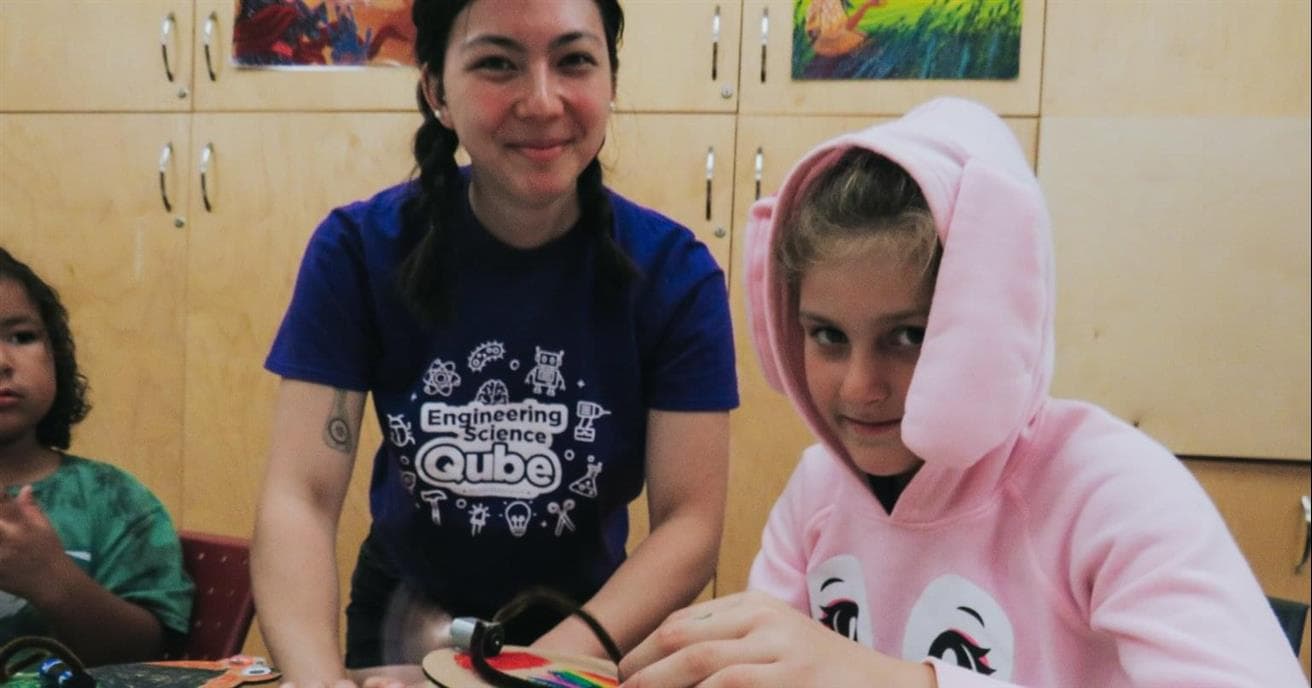Reid attended the Aamjiwnaang First Nation Science and Technology Camp for the third year in a row during the first week of July. A member of Aamjiwnaang First Nation in Sarnia, ON, Reid has a thirst for all things STEM, particularly robotics and computer coding.
While he admits he’s still trying to decide what he wants to do when he’s older, Reid says he’ll most likely stick with something in the STEM realm.
“I got a good grade in science class at school,” says Reid. “I built a volcano using baking soda, vinegar, food colouring and soap—the soap helps makes it foamy. It exploded on the carpet in my classroom, but I cleaned it up.”
With guidance from University of Waterloo engineering graduate Sam Idziak, the camp’s program development team lead, and two other University of Waterloo co-op students, Reid and his fellow campers explored biology and engineering, learned about chemistry and helped the environment, and created stop motion videos to explore coding and art.
“I keep coming back every summer to do this,” says Sam. “I love hanging out with the kids and laughing with them, while doing science along the way.”
Sam and the co-op students started developing the content for the five-day camp in May. And says her favourite part of the annual summer STEM camp is leading kids through activities they don’t get to do in school like building small robots called jitterbugs.
Throughout the summer, camps like the one at Aamjiwnaang, which is offered in partnership with Actua--Canada’s leading STEM youth outreach network—and its network member Engineering Outreach at the University of Waterloo, are held in various Indigenous communities across the country as part of Actua’s Indigenous Youth in STEM (InSTEM) programing. The summer STEM camps are supported by the Suncor Energy Foundation (SEF).
“SEF has been the leader supporting Actua’s InSTEM programing, which is now delivered nationally, for over 20 years,” explains Doug Dokis, Actua’s Director for the National InSTEM Program.
In addition to delivering STEM education to the youth campers, the day camps include local Elders and community members who can talk about the relationships between traditional Indigenous knowledge and the STEM activities being practiced by the budding scientists, engineers, coders and artists.
Engineering Outreach at the University of Waterloo is one of Actua’s 43 national members that deliver this programing, primarily through summer, but there are other programs that run throughout the academic year.
Actua also offers high school credits through its InSTEM program, which is designed to engage more Indigenous youth in STEM and improve high school graduation rates for Indigenous youth, to Indigenous high school students who go through its eleven-day, fully immersed land-based camp.
Doug says the hope for Actua’s InSTEM programing is that youth like Reid will advance through the programs, into university and bring their knowledge and skills back to their communities.
“We provide training and support to our network member instructors, like Sam, to identify potential students that we can move along through our system and create next-step opportunities for them such as internships and camp facilitator positions.”
As for happy camper Reid, he’s hoping to return to the InSTEM summer camp again next year and has some advice for others wanting to join the camp: “Try to practice coding in school or try to create your own robot and work circuits and different wires, because there’s a lot of wires in the world.”




